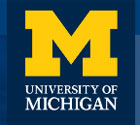
Doctor of Philosophy in Naval Architecture and Marine Engineering
在密西根大學安娜堡分校
關於課程
The Department of Naval Architecture and Marine Engineering offers courses leading to a Master of Science (MS) degree and/or a Master of Science in Engineering (MSE) degree, and a Doctor of Philosophy (PhD) degree. Also available are multiple options for Dual degrees in collaboration with other programs at the university, such as a Joint MSE / MBA degree. These programs are administered through the Horace H. Rackham School of Graduate Studies. Our proud and passionate network of alumni connects current students and new graduates directly to industry and top institutions. NAME careers are modern, varied, and always evolving — and our graduates are the ones who shape it. The program in Naval Architecture and Marine Engineering gives engineers an opportunity to focus on emerging and growth fields. The academic focus areas consist of three major divisions as follows: Engineering for the marine environment requires the analysis of complex systems including their hydrodynamic characteristics, structural integrity, and dynamic responses. Marine mechanics is at the heart of these analyses and involves the study of the fundamental physics of marine systems along with the development and use of analysis tools. Whether the marine system is a ship, an offshore structure for oil and gas recovery, or an energy harvesting device, their design requires the same basic analysis tools of applied mechanics and numerical modeling.
The naval architect’s role in advanced marine design may be one of applying the latest design methods to specific design issues or one of overall design integration and leadership of integrated product/process development teams. Naval architects may also have leading roles in the management of marine systems. The unifying philosophy of the Department’s study in this area is that of multi-discipline engineering and concurrent design from early in the design process of the performance, manufacture, and the life-cycle support of a design. Manufacturing considerations are an integral part of the design process. Marine design today is often conducted with cross-functional integrated product development teams. Specify study within this area can emphasize overall design, marine engineering, maritime systems management, ship production, or optimization methods and design under uncertainty.
Marine robots cannot use GPS since they operate underwater. Therefore, it is necessary for robots to use computer vision and image processing in conjunction with time-synchronized acoustic navigation for autonomously mapping their environment and navigating in it. This technology has provided the foundation for related research efforts for autonomous undersea vehicles and ground vehicles, automotive active safety situational awareness, and autonomous ship hull inspection. Development of control algorithms and strategies is an integral part of creating autonomous robots. In addition to the robot applications, there are significant activities in control system development and optimization for marine and automotive propulsion systems, fuel cells, and energy storage devices.
The naval architect’s role in advanced marine design may be one of applying the latest design methods to specific design issues or one of overall design integration and leadership of integrated product/process development teams. Naval architects may also have leading roles in the management of marine systems. The unifying philosophy of the Department’s study in this area is that of multi-discipline engineering and concurrent design from early in the design process of the performance, manufacture, and the life-cycle support of a design. Manufacturing considerations are an integral part of the design process. Marine design today is often conducted with cross-functional integrated product development teams. Specify study within this area can emphasize overall design, marine engineering, maritime systems management, ship production, or optimization methods and design under uncertainty.
Marine robots cannot use GPS since they operate underwater. Therefore, it is necessary for robots to use computer vision and image processing in conjunction with time-synchronized acoustic navigation for autonomously mapping their environment and navigating in it. This technology has provided the foundation for related research efforts for autonomous undersea vehicles and ground vehicles, automotive active safety situational awareness, and autonomous ship hull inspection. Development of control algorithms and strategies is an integral part of creating autonomous robots. In addition to the robot applications, there are significant activities in control system development and optimization for marine and automotive propulsion systems, fuel cells, and energy storage devices.
- 實習機會
開始日期及學費
如何申請
Entry requirements for 密西根大學安娜堡分校
TOEFL ibt: 84, TOEFL Paper/Pencil TOEFL and TWE (For tests taken prior to July 2017): 560 and Revised Paper Delivered Test (For tests taken July 2017 or later) An overall score is not provided for this test. Minimum section scores: Reading = 23, Listening = 23, Writing = 21. IELTS: 6.5.
Official Transcripts from all Universities/College attended
English language requirements
托福(TOEFL iBT)總分: 84.0
最後申請期限:
這個日期的預約已滿,聯絡IDP的顧問以獲得詳細資訊
更多資訊
評價與排名
近期活動
想了解更多關於此處的資訊?請看 IDP如何蒐集並展示課程資訊. 此處的資訊內容若有誤,IDP不負任何責任與義務。建議您直接洽詢IDP的專業顧問,以獲得最新最準確的資訊。















我們開始吧!
一鍵註冊或登入
檢視清單 或關閉此視窗以繼續搜尋